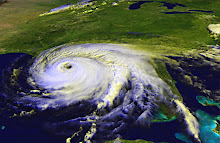Making a Difference with Your Group
If your church or civic organization wants to take aid to areas hit by a disaster, you need a plan. Sure, you can load your truck with hand tools and water and head to the disaster area with the best intentions, but it’s much better to make contact with someone in the area and know exactly what you’ll be doing and what to bring along.
Repairs and Rebuilding
If you have able-bodied people with carpentry or DIY skills, you can help people make repairs to their homes. Figure out who you are going to help before you leave and take all the materials and tools you need with you.
For the first couple of weeks, until electricity is restored, power tools are useless unless you have your own generator, extension cords and plenty of gasoline. If you are going to replace roofs, you need to know what kind of roof you’ll be working on, do you need shingles or rolled roofing? How big is the house? Will you need plywood, OSB or planks to repair a damaged structure or are you just replacing shingles?
Cleaning Up
Bring trash bags, bar magnets for picking up nails, and disinfectant wipes. Unless you know for sure that water is running to the home where you’re working, bring your own water tanks for washing hands or cleaning tools. Discuss with the homeowner or resident whether you can leave your trash bags there for pick-up. If access to the area is difficult because of damage, the garbage trucks may not be running. You may need to take your trash to a landfill or another area designated for debris. See if you can find out whether any fees are being charged at those sites. The local government will probably seek reimbursement from FEMA rather than charging people whose homes sustained damage, but it’s better to find out before you get there.
Feeding the Hungry
In a disaster area where power is out, a hot meal is a blessing to disaster victims, first responders, utility crews, and volunteers. If you want to help feed the army, you need a portable cooking trailer or a commercial kitchen, perhaps available through a church or community center. Before you leave home, determine what resources you can take with you and what will be available where you’re going. If you need bottles of LP gas, charcoal for a grill, a generator and gasoline – take it with you.
Don’t assume you’ll be able to buy what you need in the disaster area. Many stores will be closed and those that are open may not be restocked for a couple of weeks due to roads being closed or lack of electricity. Decide what you’re cooking and look at a recipe. You may have made your grandma’s goulash a thousand times, but that doesn’t mean you’ll remember to pack the salt without reading the recipe or making a list.
You’ll need serving utensils, plasticware, paper or Styrofoam plates, and napkins, as well as salt and pepper shakers (or those little packets), ketchup and other condiments. Try to think through the whole process of cooking the meal, from start to finish and make a list of everything. Ask a couple of other people to look at the list. They may remember something you didn’t.
Clothing Donations
After any natural disaster in our region, the newsroom where I work would be inundated with calls from people asking where they can donate clothing. It’s understandable. You can clean out your closet and give to people who may have lost everything but the clothes on their back.
Unless you are gathering items for a specific family and you have their sizes, don’t even think about it.
After Hurricane Katrina, mountains of clothing sat in parking lots getting rained on, because no one was available to sort and distribute it. Also, thrift stores will tell you that they throw away a lot of clothing donations because they really should be trashed due to stains or other wear-and-tear.
The best way to use your old clothes to help disaster victims is to look first at every piece and ask if you would want to receive it if you’d just lost everything. Be honest. Then hold a yard sale to sell it and donate the money for disaster aid.
Break Time
No matter what you are doing in the disaster area, you should bring plenty of food and water for everyone on your team and a good first aid kit. Resources are very limited after a natural disaster.

2 comments:
I live in Southeast Alabama and though we don't get the full effects of hurricanes we do get some high winds and a LOT or rain. I've seen our area come together to help each other as well as other areas that are in need. It's being prepared that's allowed us to move and get to where the help is needed quickly.
Thanks for commenting, Dee. It is just as important for communities and organizations to be ready, as it is for individuals and families.
Post a Comment